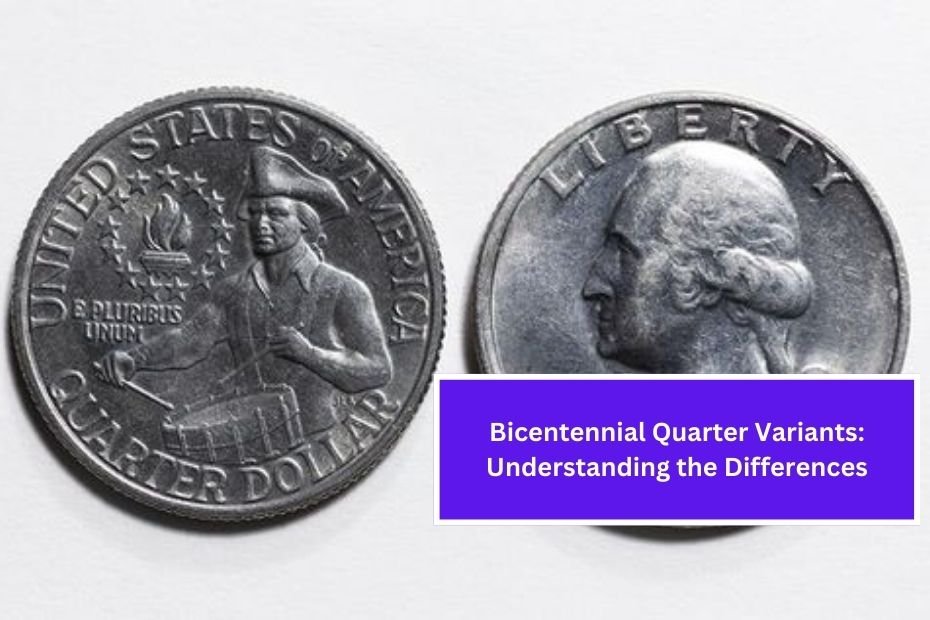The Bicentennial Quarter is a special coin that celebrates the 200th anniversary of the United States. Released in 1975 and 1976, these quarters are unique not just for their commemorative design but also for the different versions that exist. In this article, we will explore the Bicentennial Quarter, the various variants, and what makes each one special. By the end, you’ll have a clearer understanding of this fascinating piece of American history.
Introduction
In 1776, the United States declared its independence from Great Britain, marking a pivotal moment in history. To celebrate the 200th anniversary of this event, the U.S. Mint introduced the Bicentennial Quarter, featuring a design that symbolizes this important milestone. Many coin collectors and history enthusiasts are drawn to these quarters, making them a popular topic in the world of numismatics (the study or collection of currency).
The Bicentennial Quarter is not just one design; it has several variants, each with its own unique features. Let’s dive deeper into what these variants are and how they differ from each other.
The Bicentennial Quarter Design
Overview of the Design
The Bicentennial Quarter features a unique design on the reverse side. Instead of the traditional eagle, the quarter showcases a depiction of the Liberty Bell and the moon. This design was created by artist John Flanagan and was meant to symbolize American freedom and independence. The front of the quarter still displays the profile of George Washington, as seen on all quarters.
Release Dates
The Bicentennial Quarters were minted in two different years: 1975 and 1976. While the design remained the same, the two years of minting are important for collectors because they correspond to different production runs.
Variants of the Bicentennial Quarter
The Bicentennial Quarter has several variants that collectors should be aware of. Here are the main types:
1. Standard Bicentennial Quarter
The most common version of the Bicentennial Quarter is the standard release, minted in both 1975 and 1976. These quarters are made from a copper-nickel composition and weigh 6.25 grams.
Features:
- Mint Mark: The quarters minted in Philadelphia do not have a mint mark, while those minted in Denver feature a “D” mint mark.
- Design: The reverse design shows the Liberty Bell and the moon, while the obverse has George Washington.
2. Silver Bicentennial Quarter
In addition to the standard version, there is a silver variant of the Bicentennial Quarter. These coins were produced specifically for collectors and are made of a 40% silver composition.
Features:
- Mint Mark: Similar to the standard version, the silver quarters from Philadelphia have no mint mark, while Denver-minted ones carry the “D” mark.
- Rarity: The silver versions are less common than the standard quarters and are more sought after by collectors.
3. Uncirculated Bicentennial Quarter
The Uncirculated Bicentennial Quarters were specially minted for collectors and are often sold in sets. These coins have a polished finish and are not meant for circulation.
Features:
- Finish: They have a higher shine and smoother appearance compared to regular quarters.
- Packaging: These coins are typically sold in special packaging, making them a great gift or addition to a collection.
4. Proof Bicentennial Quarter
Proof coins are made using a special minting process that results in a high-quality finish. The Proof Bicentennial Quarters were also created for collectors.
Features:
- Finish: Proof coins have a mirror-like surface, giving them a distinct appearance.
- Packaging: Like Uncirculated coins, Proof quarters come in special sets, often with certificates of authenticity.
5. Error Coins
As with many coins, there are also error variants of the Bicentennial Quarter. These are coins that have mistakes during the minting process, making them unique and often more valuable.
Features:
- Types of Errors: Common errors include double strikes, off-center strikes, and wrong mint marks.
- Rarity: Error coins can be quite valuable, depending on the nature and severity of the error.
Collecting Bicentennial Quarters
Why Collect?
Collecting Bicentennial Quarters can be an enjoyable and rewarding hobby. Here are some reasons why collectors find these coins appealing:
- Historical Significance: The Bicentennial Quarter commemorates a significant moment in American history, making it meaningful for collectors.
- Variety: With several variants available, collectors can focus on specific types or try to acquire all of them.
- Investment Potential: Certain versions, especially silver and error coins, can appreciate in value over time, making them good investment options.
How to Start Collecting
If you’re interested in starting your collection, here are some tips:
- Research: Learn about the different variants and their characteristics. Books, websites, and coin shows are great resources.
- Set a Budget: Decide how much you want to spend on your collection. Prices can vary significantly based on the coin’s condition and rarity.
- Buy from Reputable Sources: Purchase coins from trusted dealers, online marketplaces, or coin shows to avoid counterfeit coins.
- Join a Community: Consider joining a coin club or online forum to connect with other collectors, share experiences, and gain insights.
Caring for Your Collection
Storing Coins
Proper storage is essential to maintain the quality of your coins. Here are some tips:
- Use Coin Holders: Store your coins in holders, flips, or albums designed for coins to prevent scratches and tarnishing.
- Keep Away from Moisture: Store your collection in a dry place to prevent corrosion. Avoid plastic holders that can trap moisture.
- Handle with Care: Always handle coins by the edges to avoid fingerprints and oils from your skin affecting the surface.
Cleaning Coins
It’s generally not recommended to clean coins, as this can decrease their value. If you need to clean a coin, consult an expert or professional to ensure it’s done safely.
Conclusion
The Bicentennial Quarter is more than just a coin; it represents a significant milestone in American history. Understanding the various variants—standard, silver, uncirculated, proof, and error coins—can enhance your appreciation and collecting experience.
Whether you’re a seasoned collector or just starting, the Bicentennial Quarter offers a unique opportunity to explore American heritage through numismatics. Remember to do your research, handle your coins carefully, and connect with fellow enthusiasts to make the most of your collection.

